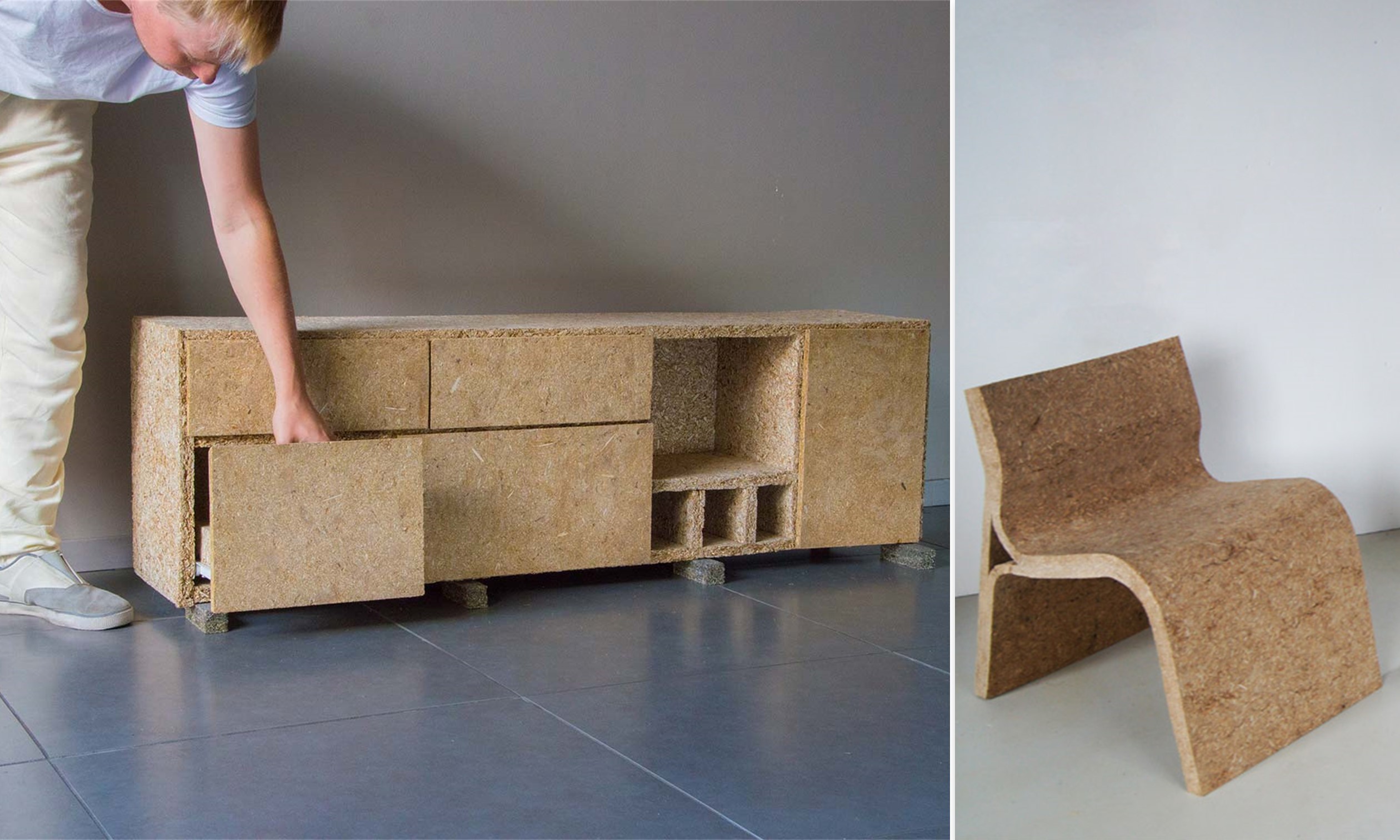
As concerns progress about climate change, innovation in biodegradable material development has taken a new meaning.
Innovations like Compostboard from The Netherlands aspire to be part of the new generation of eco-friendly design materials that will shape the future of the eco cycle.
Rik Makes, a young circular designer based in Eindhoven, created this initiative to demonstrate the stylish prospect of living in harmony with nature by employing a circular attitude.
The project is part of the many applications submitted to the New European Bauhaus rising star prizes in the "Techniques, materials and processes for construction and design" category.
The idea behind it?
Natural fibers & binders are used to create eco-friendly design materials. The fibers are derived from organic waste streams in the form of hemp chips, straw dust & withered flowers.
The material in the form of a sheet can be utilized for a wide range of interior applications, from small to large. Given the material's aesthetics, the options are limitless: cabinets, furniture, floors, you name it.
Compostboard is a nature inclusive material that has a function for both people and nature.
It incorporates nature into the equation, showcasing how the environment can be integrated into our products and part of our indoor living and working spaces.
The material highlights the grandeur that landscapes and plant varieties offer, from sheet to table to plant pot or coffin. It comes in different fibers. Flax, Hemp, Pepper, Typha, for instance, are all grown on different soil types: Sand, swamp/peat, clay, or in a greenhouse.
Touching Compostboard gives a natural experience, in some ways similar to wood.
In its afterlife, the material breaks down to nutritious fibers & sugars leaving its surroundings more fertile. The sticky binder is starch-based, which means that when dissolved, the starch energises organisms and fungus while the fibers maintain minerals and moisture in place, resulting in a hummus-rich and active soil.
What are your thoughts on this new generation of innovative biodegradable materials
📸 © European Union
- Reference
- Prizes 2021, Other Applications
- Project locations
- Eindhoven, Netherlands
